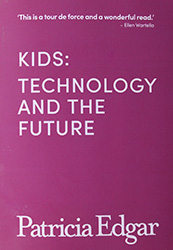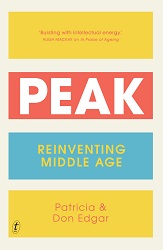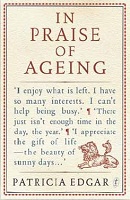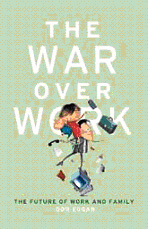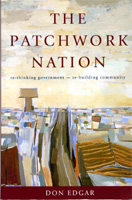
Patricia Edgar & Don Edgar

PATRICIA EDGAR. Kids Technology and the Future: Technology is not the enemy. The Need for Positive Media Literacy (Part 1).
Posted on 4 December 2018
The Information-technology Revolution is challenging the assumptions on which the education of children and the provision of their entertainment are based. The doomsayers argue the big companies - Google, Facebook, Amazon, Apple, et al. - despite their rhetoric of preventing evil and promoting global togetherness - are in fact exacerbating inequality, poverty, unemployment, invasion of privacy, breakdown in social cohesion, supporting political disruption and Donald Trump.
On the other hand it is argued this revolution has the potential to transform lives for billions of people by solving the problems threatening the viability and sustainability of our planet including climate change, waste disposal, water- shortage, clean energy production, food supply, achieving social cohesion and economic sustainability on our planet. Most of us can't take to the bush and create a life off the grid so we must adapt. Balance is a key concept for a successful transition into this technological era. In this process we will need visionary leadership and a first-class education for children which should begin at pre-school, with 3-6-year olds.
Small children, not capable of putting words together, can now skillfully access digital content on phones and tablets. By five or six kids can use social-media to learn and stay in touch with parents and others. By seven to ten they are creating content by commenting on friends' posts and by eleven they are sharing personal photos, videos, stories and memes. Today the calls by some paediatricians and concerned parents for children to spend no more than two hours per day across all electronic devices - to counter health problems, including brain damage, obesity, eye damage, postural problems, sleep deprivation, along with a host of psychological problems - are fanciful. Children's total daily media use (including multi-tasking with up to three devices at once) has been close to double figures for over a decade. So if we want to mediate the problems predicted from 'excessive' media usage, a creative solution, rather than a censorious approach, is what should be sought.
Because their media environment is not under the control of parents or teachers as it used to be, the distinctions between childhood and youth are blurring as maturity and 'knowing' come at an earlier age. Children today can access life in the wider world with the click of a finger. This has implications for their education and their media entertainment as they are often steps ahead of their teachers and parents, many of whom are unprepared to manage their children's digital interests.
Digital technology is creating resources of extraordinary potential but today's children see nothing new or remarkable in these devices. They have become an essential part of their world and mastery of their use has become a necessary life skill, as important as reading and writing, for living successfully. So the more we understand these new technologies the more effectively we will be able to use their power in the service of education, democracy, humanity and the future we build for younger generations.
We need to start by accepting young people are no longer a passive audience to be dictated to about what they view and when they view it. They have forsaken traditional television programs to go online and choose from the myriad of options open to them which they engage with enthusiastically.
Undoubtedly there are hazards for children in this online world and the lessons to be learned are complex. At an age when they are discovering that Father Christmas, the Easter Bunny and the Tooth Fairy aren't real, we need to teach children that what they write or post on the internet will remain there forever. A cheeky, provocative 'selfie' or a bullying comment online, become part of a personal digital footprint able to be sourced by others, including future employers, indefinitely. But responsible internet use can bring rewards and it is now a central part of our way of life.
We need a broader, more positive approach to media literacy than has been taken so far. Children have to learn to interpret and navigate the 24/7 information overload so they can become informed participants in civil society. They need to understand that simply seeing cannot mean believing, that it is possible to construct reality. The President of the United States says, 'What you are seeing and hearing is not what is happening.' So who can be believed? We need a curriculum in schools that teaches understanding of factual news and information; that persuasion is mixed in with entertainment and information to influence behaviour and attitudes, not only of consumers by advertisers, but by political propagandists to shape our beliefs. As Seymour Hersh, the investigative journalist who exposed the My Lai massacre in Vietnam has written, 'If your mother says she loves you, check it out!'
The implications of AI, facial and voice recognition and issues related to invasion of privacy also require understanding, for many young people don't give a thought to sharing intimate personal details online. One prediction is that by 2020 China will be able to score each of their 1.4 billion citizens, based on their observed behaviour, down to how carefully they cross the street. The USA and Australia are also on this path. Where will such scrutiny lead? Education is the only practical and rational response.
Pre-school is not too soon to begin media literacy education as ideas and habits are shaped early. Most of children's early brain development happens spontaneously, wherever they may be, as a result of playing with things and exploring their environment with innate curiosity and imagination. Through play, children learn the social strategies and skills they need to function as they are growing. Unfortunately instead of capturing and building on these natural attributes, schooling often crushes such spontaneity and produces conformity, by delaying knowledge acquisition through standardized curricula and resistance to new technology. As well, their entertainment media is too often stereotyped and banal.
Both media and education institutions have much to offer each other as children are now willingly and enthusiastically merging their education and entertainment, presenting an opportunity we would be remiss not to capitalize on.
But before we make programs for them we must make the effort to set aside prejudice and understand our new child audience: we can no longer just serve them up what we, as adults, think is good for them. Technology offers the entertainment industry economic benefits and offers the education sector greater appeal and effectiveness for teaching and learning. It is time to encourage collaboration between the media and schools for the future of children and a 21st century education.
Patricia Edgar is the author of Kids, Technology and the Future; (ASP 2018). Over fifty years she has been at the forefront of broadcasting policy, research, production and advocacy for children's programs.
